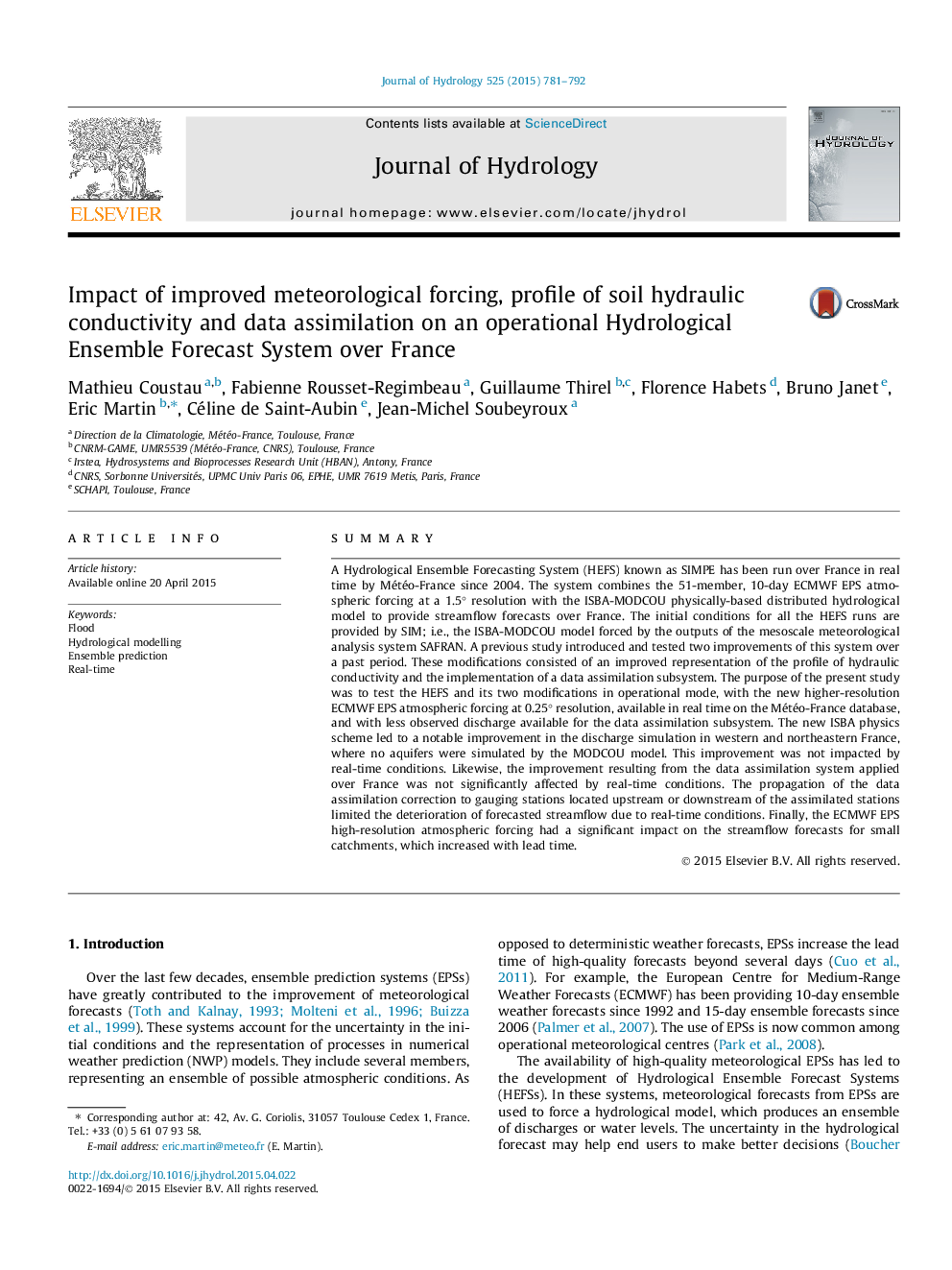| Article ID | Journal | Published Year | Pages | File Type |
|---|---|---|---|---|
| 6410686 | Journal of Hydrology | 2015 | 12 Pages |
â¢The performance of a new version of a real-time HEFS is evaluated.â¢The update of the physics of the model improves the scores at all lead times.â¢The past discharge assimilation improves the scores for the first 2-3 days.â¢Meteorological forecast at 0.25° improves scores over catchments smaller than 800 km2.â¢In the new HEFS, the negative effect of the lack of real time observations is limited.
SummaryA Hydrological Ensemble Forecasting System (HEFS) known as SIMPE has been run over France in real time by Météo-France since 2004. The system combines the 51-member, 10-day ECMWF EPS atmospheric forcing at a 1.5° resolution with the ISBA-MODCOU physically-based distributed hydrological model to provide streamflow forecasts over France. The initial conditions for all the HEFS runs are provided by SIM; i.e., the ISBA-MODCOU model forced by the outputs of the mesoscale meteorological analysis system SAFRAN. A previous study introduced and tested two improvements of this system over a past period. These modifications consisted of an improved representation of the profile of hydraulic conductivity and the implementation of a data assimilation subsystem. The purpose of the present study was to test the HEFS and its two modifications in operational mode, with the new higher-resolution ECMWF EPS atmospheric forcing at 0.25° resolution, available in real time on the Météo-France database, and with less observed discharge available for the data assimilation subsystem. The new ISBA physics scheme led to a notable improvement in the discharge simulation in western and northeastern France, where no aquifers were simulated by the MODCOU model. This improvement was not impacted by real-time conditions. Likewise, the improvement resulting from the data assimilation system applied over France was not significantly affected by real-time conditions. The propagation of the data assimilation correction to gauging stations located upstream or downstream of the assimilated stations limited the deterioration of forecasted streamflow due to real-time conditions. Finally, the ECMWF EPS high-resolution atmospheric forcing had a significant impact on the streamflow forecasts for small catchments, which increased with lead time.
